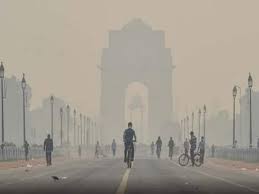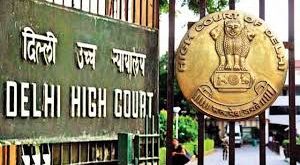New Delhi. On Sunday, people in Delhi ( Delhi) celebrated Diwali with great pomp and show, along with lighting decorations, they burst crackers. Despite the Supreme Court ban on firecrackers, people burst fireworks on Diwali. Due to which Delhi’s Air Quality Index (AQI), which had improved to a great extent after Friday’s rain, once again deteriorated. According to Safar India, Delhi’s AQI was recorded at 286 on Monday morning. Whereas Delhi’s AQI was recorded at 204 on Sunday morning. However, this time compared to last year, relatively better air quality was seen in Delhi and this gave a lot of relief to those celebrating Diwali in Delhi.
According to the Central Pollution Control Board, the air quality across Delhi remains in the ‘poor’ category. AQI was 296 in Anand Vihar, 290 in RK Puram, 280 in Punjabi Bagh and 263 in ITO. AQI was recorded at 279 in Burari, 302 in Dwarka, 305 at IGI Airport, 263 at ITO, 326 at Jahangirpuri, 300 at Lodhi Road, 228 at Ashok Vihar and 281 at Wazirpur. There is a layer of smog in some parts of Delhi. Due to which visibility on the roads has reduced considerably and it has become difficult to see beyond a few hundred metres. An increase in pollution levels was seen due to burning of firecrackers in Delhi on Diwali. Delhi’s AQI was 218 at 4 pm on Sunday, which was the best in the last at least three weeks.
Recently, CM Arvind Kejriwal’s AAP government in Delhi had completely banned firecrackers. In view of the pollution situation, the government also considered the idea of ‘artificial rain’ to deal with the bad air in the city, while the sudden rain on Friday brought great relief to the people. Due to which the pollution level reduced. The latest posts and reports shared on social media sites have revealed that a large number of people have taken part in bursting firecrackers at different places. Bright fireworks lighting up the night sky were seen in many areas of Delhi on Sunday night, including Lodhi Road, RK Puram, Karol Bagh and Punjabi Bagh.
It is noteworthy that AQI between zero and 50 is ‘good’, between 51 and 100 is ‘satisfactory’, between 101 and 200 is ‘moderate’, between 201 and 300 is ‘bad’, between 301 and 400 is ‘very poor’ and Between 401 and 450 is considered ‘severe’. When AQI exceeds 450, it is considered in the ‘very serious’ category. According to Central Pollution Control Board data, AQI in Delhi was recorded at 312 on Diwali last year, 382 in 2021, 414 in 2020, 337 in 2019, 281 in 2018, 319 in 2017 and 431 in 2016.
 Indian Thought Latest News & Views
Indian Thought Latest News & Views



